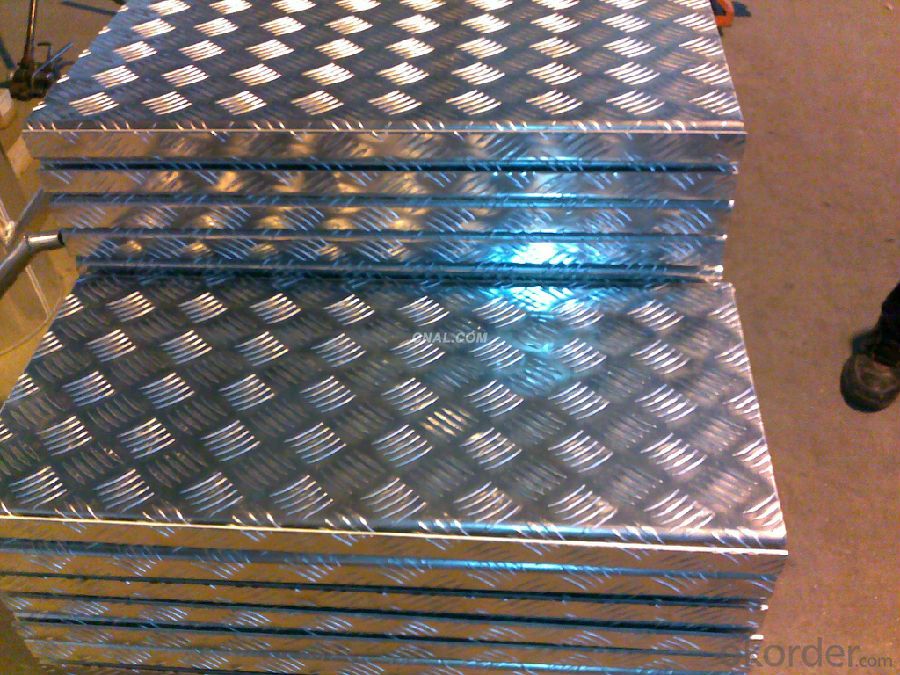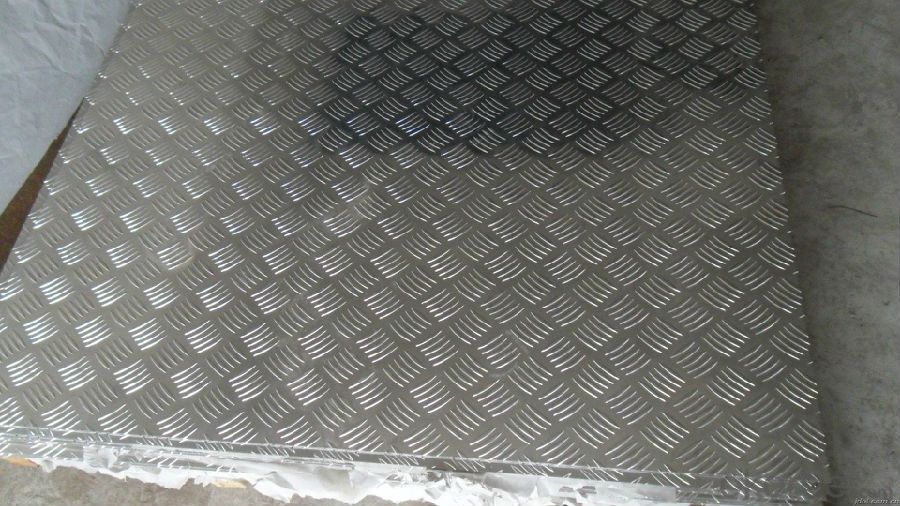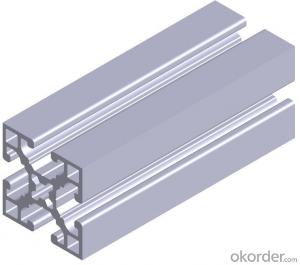Aluminium Plate for Construction Application in Cars
- Loading Port:
- Shanghai
- Payment Terms:
- TT OR LC
- Min Order Qty:
- 5 m.t.
- Supply Capability:
- 2000 m.t./month
OKorder Service Pledge
OKorder Financial Service
You Might Also Like
Item specifice
Structure of Aluminium Plate for Construction Application in Cars Description:
Coated aluminum coil/sheet are of a wide range of colors, which gives wonderful appearance no matter in residential and commercial constructions of great exhibition centers.
The coated aluminum coil/sheet have been widely used in the fields of construction and decoration( garage doors, ceiling etc.), electronic appliances, lighting decoration, air-condition air pipes, sandwich panels and drainages etc.
Main Features of theAluminium Plate for Construction Application in Cars:
1) High flexibility
2) Impact resistance
3) Excellent weather-proof durability
4) Anti-ultraviolet
5) High erosion resist
Images of the Aluminium Plate for Construction Application in Cars:



Aluminium Plate for Construction Application in Cars Specification:
Alloy | A1100,A3003,A1050,A8011 etc |
Temper | H16,H18,H24 |
Thickness | From 0.024mm to 1.2mm |
Width | Standard width:1240mm |
Special width:1300mm,1520mm,1570mm,1595mm | |
Diameter | Standard dia:1200mm |
Interior dia:150mm,405mm,505mm | |
Weight | 2.5 T/coil,3.0 T/coil |
Coating | PE, PVDF, AC |
Surface | Embossed, mill finish, coated |
Color | AS to code RAL |
Gloss | 10-90%(EN ISO-2813:1994) |
Coating Thickness | PE: more than 18 micron |
PVDF: more than 25 micron | |
Coating Hardness (pencil resistance) | More than 2h |
Coating adhesion | 5J(EN ISO-2409:1994) |
Impact Resistance | No peeling or cracking(50 kg/cm,ASTMD-2794:1993) |
Flexibility (T-bend) | 2T |
MEK resistance | More than 100 |
FAQ:
a.What is monthly capacity
---CNBM is one stated own company and our monthly capacity is about 2000tons.
b. Now which countries do you export your goods?
---Now we export to South East Asia,Africa, North America,South America ect.
- Q:Can aluminum profiles be used for retail displays?
- Indeed, retail displays can utilize aluminum profiles. These profiles possess a remarkable versatility that allows for customization to suit diverse design needs. Notably, they combine lightweight properties with superior strength, rendering them perfect for the construction of robust and enduring retail displays. Furthermore, aluminum profiles lend themselves to effortless shaping, cutting, and assembling, resulting in the creation of distinctive and captivating displays. By employing powder coating or anodization techniques, these profiles can attain a variety of colors and finishes, thereby enhancing the visual appeal of the retail environment. Moreover, through seamless integration with materials like glass, acrylic, or wood, aluminum profiles enable the production of multi-material displays. In conclusion, the remarkable flexibility, durability, and aesthetic charm of aluminum profiles establish them as an excellent choice for retail displays.
- Q:What are the different surface texturing options for aluminum profiles?
- There are several surface texturing options available for aluminum profiles, each offering unique benefits and aesthetic appeal. Some of the common surface texturing options for aluminum profiles include: 1. Brushing or Satin Finishing: This technique involves the use of abrasive brushes to create a linear or circular pattern on the surface of the aluminum profile. It provides a smooth, matte finish, which is visually appealing and hides minor imperfections. 2. Anodizing: Anodizing is a popular surface treatment method that involves creating an oxide layer on the aluminum surface. This process not only enhances the corrosion resistance of the profile but also allows for the application of various colors, making it an excellent choice for decorative applications. 3. Polishing: Polishing is a process that involves mechanically smoothing the surface of the aluminum profile to achieve a reflective finish. This technique is commonly used in architectural applications where a high-gloss appearance is desired. 4. Powder Coating: Powder coating is a durable and versatile surface treatment option for aluminum profiles. A dry powder is electrostatically applied to the profile, and then it is cured under heat, creating a protective and decorative coating. Powder coating provides a wide range of color options and excellent resistance to weathering, making it suitable for both interior and exterior applications. 5. Textured Coating: Textured coating is a specialized powder coating technique that offers a unique texture and appearance to the aluminum profile. It can mimic various textures, such as wood grain or stone, adding a distinctive look to the profile. 6. Chemical Etching: Chemical etching is a process that involves selectively removing material from the surface of the aluminum profile using chemical solutions. This technique can create intricate patterns or designs on the surface, making it ideal for decorative or branding purposes. 7. Laser Engraving: Laser engraving is a precise and versatile method for creating patterns, logos, or text on the surface of aluminum profiles. The laser beam removes the material, leaving a permanent mark on the profile. Laser engraving offers high precision and customization options, making it suitable for branding and personalization. These are just a few examples of the surface texturing options available for aluminum profiles. The choice of texturing method depends on the desired appearance, functionality, and application of the profile.
- Q:Calculation of heat dissipation of aluminium profile radiator
- I do not understand this, I am a hardware maintenance, you know that copper is better than aluminum heat conductivity, so most of the notebook is made of copper heat sink, desktop more aluminum
- Q:How do aluminum profiles perform in terms of water resistance?
- Aluminum profiles generally exhibit good water resistance due to their natural properties. The metal itself is corrosion-resistant, which means it does not easily rust or degrade when exposed to water. Additionally, aluminum profiles can be further treated with coatings or anodization processes to enhance their water resistance capabilities. These surface treatments create a protective layer that prevents water from penetrating the metal, reducing the risk of damage or deterioration over time. However, it is important to note that the water resistance of aluminum profiles can vary depending on the specific alloy, surface treatment, and maintenance practices. Regular cleaning and proper sealing of joints can help ensure optimal water resistance performance.
- Q:Are aluminum profiles suitable for solar panel frames?
- Yes, aluminum profiles are highly suitable for solar panel frames. Aluminum is a lightweight yet strong material, making it an ideal choice for constructing solar panel frames. It offers excellent corrosion resistance, which is crucial for outdoor applications, ensuring the longevity and durability of the frames. Additionally, aluminum profiles can be easily shaped and formed, allowing for flexible and customizable designs to accommodate different solar panel sizes and configurations. Furthermore, aluminum is a highly sustainable material as it is 100% recyclable, aligning with the environmentally-friendly nature of solar energy. Overall, the use of aluminum profiles for solar panel frames provides numerous advantages such as strength, durability, corrosion resistance, flexibility, and sustainability, making it a highly suitable choice.
- Q:What are the dimensions and sizes of aluminum profiles?
- The dimensions and sizes of aluminum profiles can vary greatly depending on their intended use and design. They can range from small and narrow profiles, such as 10mm x 10mm square tubes, to larger and wider profiles, such as 100mm x 100mm square tubes. Additionally, aluminum profiles can come in various shapes, including square, rectangular, round, and custom shapes, to accommodate different applications and structural requirements. It is important to consult specific product catalogs or manufacturers for precise dimensions and sizes of aluminum profiles.
- Q:Can aluminum profiles be used in HVAC systems?
- Yes, aluminum profiles can be used in HVAC systems. They are commonly used for constructing ductwork, heat exchangers, and other components due to their lightweight, corrosion-resistant, and durable properties. Aluminum profiles are also easily customizable, making them suitable for various HVAC applications.
- Q:What is aluminum profile?
- Aluminum is the aluminum bar through hot melt, extrusion, so as to obtain different cross-section of aluminum. The production process of aluminum profile mainly includes three processes: casting, extrusion and coloring. Among them, the color mainly includes: oxidation, electrophoresis coating, fluorine carbon spraying, powder spraying, grain transfer and other processes.
- Q:Are aluminum profiles suitable for use in electronics manufacturing?
- Yes, aluminum profiles are suitable for use in electronics manufacturing. Aluminum is a lightweight and durable material with excellent thermal conductivity, making it ideal for use in electronic components and enclosures. It also offers good electromagnetic shielding properties. Additionally, aluminum profiles can be easily customized and fabricated to meet specific design requirements, making them a popular choice in the electronics industry.
- Q:Can aluminum profiles be used for electrical bus ducts?
- Yes, aluminum profiles can be used for electrical bus ducts. Aluminum is a suitable material for bus ducts as it is lightweight, corrosion-resistant, and has good electrical conductivity. Additionally, aluminum profiles can be easily fabricated and installed, making them a popular choice for electrical bus ducts in various industries.
1. Manufacturer Overview |
|
|---|---|
| Location | |
| Year Established | |
| Annual Output Value | |
| Main Markets | |
| Company Certifications | |
2. Manufacturer Certificates |
|
|---|---|
| a) Certification Name | |
| Range | |
| Reference | |
| Validity Period | |
3. Manufacturer Capability |
|
|---|---|
| a)Trade Capacity | |
| Nearest Port | |
| Export Percentage | |
| No.of Employees in Trade Department | |
| Language Spoken: | |
| b)Factory Information | |
| Factory Size: | |
| No. of Production Lines | |
| Contract Manufacturing | |
| Product Price Range | |
Send your message to us
Aluminium Plate for Construction Application in Cars
- Loading Port:
- Shanghai
- Payment Terms:
- TT OR LC
- Min Order Qty:
- 5 m.t.
- Supply Capability:
- 2000 m.t./month
OKorder Service Pledge
OKorder Financial Service
Similar products
New products
Hot products
Related keywords































